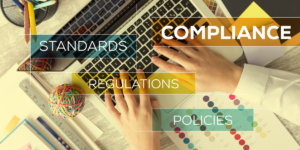In the field of special education, the role of parents cannot be overstated. Parental advocacy has the potential to significantly shape a student’s educational experience, but it also presents challenges and demands a collaborative approach from all parties involved. Understanding the true impact of parental advocacy is essential for educators, administrators, and service providers who are committed to ensuring that students with disabilities receive the appropriate support and opportunities for success.
💡 You can also download this resource as a PDF here.
Navigating the Complexity of Special Education: Parental Advocacy at the Forefront
Special education is a multifaceted field that requires careful attention to the individual needs of students with disabilities. Federal and state regulations, such as the Individuals with Disabilities Education Act (IDEA), mandate that students with disabilities receive a free and appropriate public education (FAPE) in the least restrictive environment (LRE). While these regulations provide a solid foundation for ensuring equity in education, the complexities of navigating the IEP (Individualized Education Program) process, determining service eligibility, and implementing effective interventions can be overwhelming for both families and school districts.
For parents, advocating for their child’s needs can feel like an uphill battle. Parents may face barriers such as lack of understanding about special education law, limited access to resources, or difficulty communicating with school personnel. At the same time, districts may encounter challenges in balancing individualized services with available resources. However, the outcome of this advocacy is undeniably influential, often determining the trajectory of a student’s academic, social, and emotional growth.
When parents are informed, empowered, and proactive, the potential for positive outcomes increases. A study published in the Journal of Special Education highlights that students whose parents are actively engaged in their education tend to experience greater academic success, increased self-esteem, and improved behavioral outcomes. In fact, parental involvement has been linked to increased school attendance, higher graduation rates, and smoother transitions into post-secondary life.
The Challenges of Parental Advocacy: Striking a Balance
While parental advocacy can enhance educational outcomes, it is not without its challenges. One of the most common obstacles is the discrepancy between parental expectations and school district resources. Parents often advocate for additional services or modifications, which may not always align with what the district is able to provide due to budget constraints or staffing limitations. This disconnect can lead to tension between parents and schools, complicating efforts to build a cooperative partnership.
Moreover, there is the risk of parents overstepping boundaries in their advocacy, inadvertently disrupting the balance of power in the IEP process. This situation is exacerbated when parents lack a clear understanding of the legal framework or the roles of the educators and service providers involved. It is critical that school personnel respond to advocacy efforts with respect and clarity, while also ensuring that expectations remain realistic and within the scope of available resources.
To mitigate these challenges, it is essential that both parents and school staff work from a shared understanding of the student’s needs, strengths, and limitations. Clear communication, transparency, and collaboration are key factors in preventing conflicts and ensuring that students receive the support they deserve. A strong working relationship between parents and school teams not only helps resolve conflicts but also strengthens the decision-making process for the student’s benefit.

Collaborating for the Benefit of the Student: A Shared Responsibility
The solution to the challenges of parental advocacy in special education lies in fostering a culture of collaboration. Successful parental advocacy doesn’t operate in isolation—it requires meaningful communication between parents, teachers, service providers, and school administrators. Parents, as the experts on their child’s life outside of school, can provide invaluable insight into their child’s needs, preferences, and challenges. Teachers, counselors, and service providers, in turn, offer their expertise on how best to support the child within the educational environment.
One key element in ensuring productive collaboration is ongoing professional development for school staff on how to effectively partner with parents. Educators must be equipped with the knowledge and skills to navigate difficult conversations, respond to parental concerns, and work within the confines of educational law. Districts should provide training on topics such as IDEA, Section 504, and effective communication strategies to ensure staff members are prepared to engage with parents in a supportive, informed manner.
Moreover, building positive relationships with parents requires schools to be proactive, not just reactive, when it comes to communication. Regularly scheduled IEP meetings, open houses, and workshops can help parents feel connected to their child’s educational team and confident in their ability to advocate for their child’s needs. Districts should also consider developing resource guides for parents to better understand the IEP process, assessment procedures, and available services, further empowering parents to make informed decisions.
In an ideal partnership, parents and educators become co-advocates for the child, pooling their resources and insights to craft a plan that is both feasible and effective. This collaborative approach not only benefits the student but also enhances the educational experience for everyone involved.
Moving Forward: Strengthening the Partnership for Long-Term Success
As school districts continue to refine their practices in special education, it is crucial that parental advocacy remains a central component of the process. By recognizing the importance of collaboration, acknowledging the challenges that parents face, and actively working to bridge gaps in understanding, districts can foster a supportive environment where students with disabilities thrive.
Parental advocacy, when approached with respect, clarity, and a shared commitment to student success, can be a powerful force in shaping educational outcomes. The key is to transform advocacy from a source of potential conflict into a powerful partnership that drives positive change for students, families, and the entire educational community.
For school districts striving to improve their special education services, empowering parents through education and collaboration is not just a strategy—it is a vital investment in the future success of students with disabilities.
About the Author: Jaclyn Miranda is a Client Solutions Specialist at Go Solutions, where she focuses on consulting with clients to develop personalized strategies that address their unique challenges. Drawing on her background in education and behavioral health, she excels at offering insightful, tailored guidance to help clients optimize their operations and achieve their goals. Jaclyn’s consultative approach is centered on building long-term relationships, ensuring that each solution is aligned with her clients’ needs and contributes to their ongoing success.





